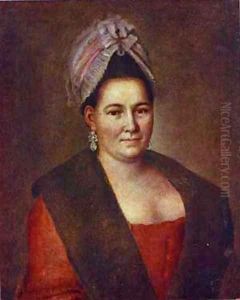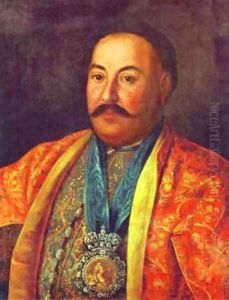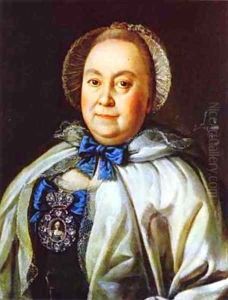Aleksei Antropov Paintings
Aleksei Petrovich Antropov was a prominent Russian portraitist in the 18th century, born in 1716 in Saint Petersburg, Russia. His contribution to Russian art is significant, particularly in the development of portrait painting. Antropov started his artistic career under the guidance of the Russian Baroque painter, Andrey Matveyev, which greatly influenced his early works.
Antropov's initial experience came from his involvement in the decoration and painting of churches, a common practice for artists of his time which provided them with steady work and a platform to hone their skills. His religious works are characterized by their clarity, simplicity, and the subtle use of colors. It was during this period that he developed his meticulous approach to detail, a quality that would come to define his later portrait works.
By the 1750s, Antropov had transitioned to portrait painting, quickly establishing himself as a court painter. His portraits are known for their simplicity, clarity, and an emphasis on the psychological depth of the subject. Unlike many of his contemporaries, Antropov's portraits lacked the embellishment typical of the Baroque style, favoring a more straightforward, realistic representation. This approach made him particularly favored by Empress Elizabeth of Russia, and later, Catherine the Great.
Among his most notable works are the portraits of Empress Elizabeth in ceremonial robes, and Peter III of Russia. These portraits not only demonstrate his skill as a painter but also serve as valuable historical documents, providing insight into the fashion and personalities of the Russian court.
Despite his success as a portraitist, Antropov also contributed to the architectural and decorative arts, working on several projects that involved the design and decoration of palaces and churches. His versatility as an artist showcases the broad range of his talents, from fine art painting to architectural design.
Aleksei Antropov passed away in 1795, leaving behind a legacy that has cemented his place as one of the key figures in the development of Russian portraiture. His works continue to be studied and admired for their historical significance and artistic merit.













